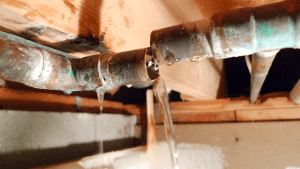How to Locate and also Fixing Water Leaks-- A Comprehensive Overview
How to Locate and also Fixing Water Leaks-- A Comprehensive Overview
Blog Article
How do you really feel when it comes to Locating water leaks?

Early discovery of leaking water lines can alleviate a prospective calamity. Apart from conserving you money, it will reduce the aggravation and frustration. The minute you locate a leakage, calling your plumber for repairs is the most effective option. However, some little water leaks might not be visible. If you can not find it with your nude eyes, here are some hacks that aid.
1. Check Out the Water Meter
Checking it is a guaranteed method that helps you discover leakages. If it relocates, that shows a fast-moving leak. This means you might have a slow-moving leak that can also be underground.
2. Examine Water Usage
If you identify abrupt modifications, regardless of your consumption being the same, it implies that you have leaks in your plumbing system. An unexpected spike in your bill suggests a fast-moving leakage.
At the same time, a consistent rise on a monthly basis, even with the exact same practices, reveals you have a slow leak that's also slowly escalating. Call a plumber to completely check your residential property, particularly if you feel a warm location on your flooring with piping underneath.
3. Do a Food Coloring Examination
When it comes to water intake, 30% comes from commodes. If the color somehow infiltrates your dish throughout that time without flushing, there's a leakage in between the container as well as bowl.
4. Asses Outside Lines
Do not forget to examine your exterior water lines as well. Should water permeate out of the connection, you have a loosened rubber gasket. One tiny leakage can throw away tons of water and increase your water expense.
5. Examine the scenario and examine
Property owners ought to make it a practice to inspect under the sink counters and even inside cupboards for any bad odor or mold and mildew development. These 2 red flags indicate a leak so prompt attention is required. Doing regular inspections, also bi-annually, can save you from a significant problem.
If you know your home is already old, keep a careful eye on your heaters, hose pipes, pipelines and so on. Look for stainings and compromising as a lot of pipelines and also devices have a life expectancy. They will also normally weaken due to tear and wear. Don't wait for it to intensify if you think dripping water lines in your plumbing system. Call an expert plumber right away so you do not wind up with a horrible mess in your home.
Early detection of leaking water lines can alleviate a potential calamity. Some tiny water leaks might not be visible. Examining it is a guaranteed way that aids you uncover leakages. One little leakage can throw away tons of water as well as surge your water costs.
If you suspect leaking water lines in your plumbing system, do not wait for it to escalate.
WARNING SIGNS OF WATER LEAKAGE BEHIND THE WALL
PERSISTENT MUSTY ODORS
As water slowly drips from a leaky pipe inside the wall, flooring and sheetrock stay damp and develop an odor similar to wet cardboard. It generates a musty smell that can help you find hidden leaks.
MOLD IN UNUSUAL AREAS
Mold usually grows in wet areas like kitchens, baths and laundry rooms. If you spot the stuff on walls or baseboards in other rooms of the house, it’s a good indicator of undetected water leaks.
STAINS THAT GROW
When mold thrives around a leaky pipe, it sometimes takes hold on the inside surface of the affected wall. A growing stain on otherwise clean sheetrock is often your sign of a hidden plumbing problem.
PEELING OR BUBBLING WALLPAPER / PAINT
This clue is easy to miss in rooms that don’t get much use. When you see wallpaper separating along seams or paint bubbling or flaking off the wall, blame sheetrock that stays wet because of an undetected leak.
BUCKLED CEILINGS AND STAINED FLOORS
If ceilings or floors in bathrooms, kitchens or laundry areas develop structural problems, don’t rule out constant damp inside the walls. Wet sheetrock can affect adjacent framing, flooring and ceilings.
https://www.servicemasterbyzaba.com/blog/how-to-detect-water-leakage-in-walls/

I came across that piece of writing on Top leak detection hacks while doing a lookup on the search engines. So long as you enjoyed reading our blog entry plz don't forget to pass it around. We treasure reading our article about Finding hidden leaks.
Report this page